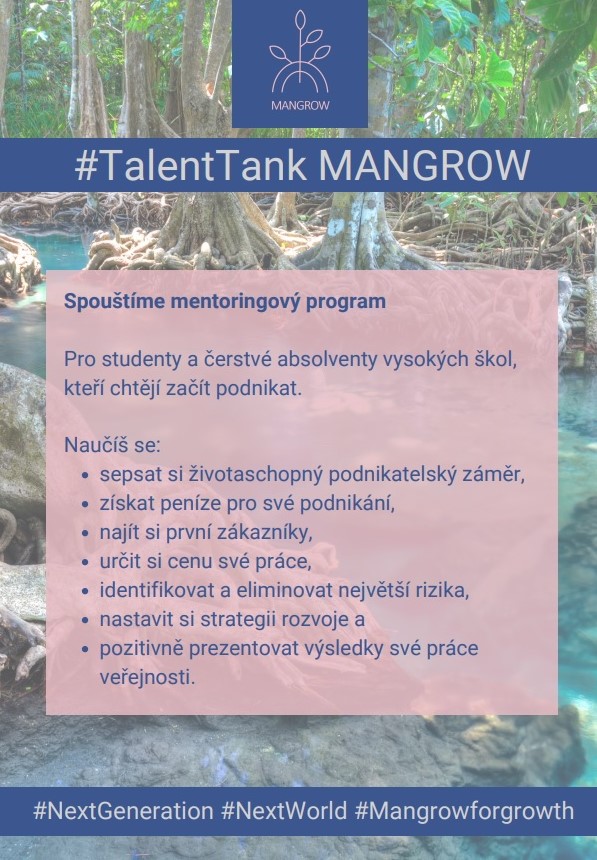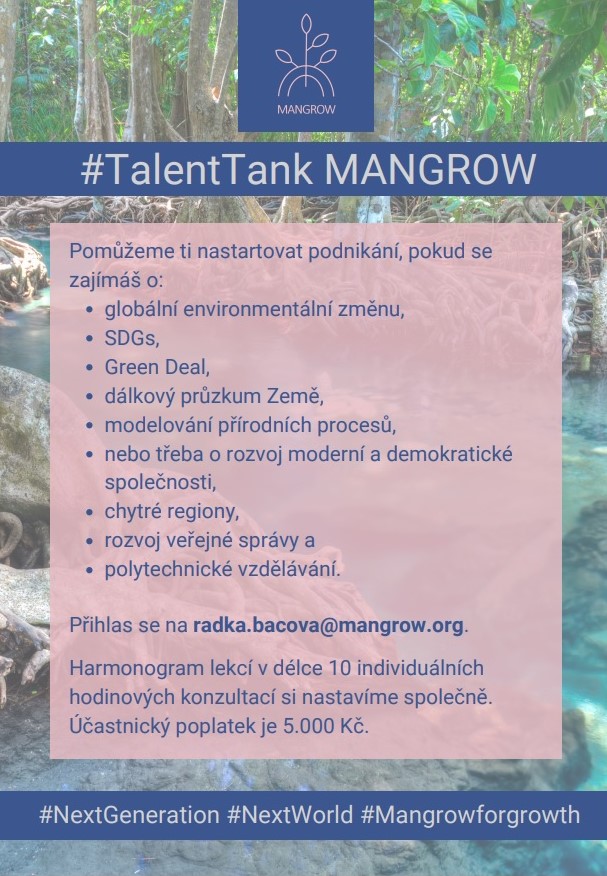zprávy
zdroje zpráv:Earth from Space: White Nile, Sudan
3.12.2021 10:00 ESA Observing the Earth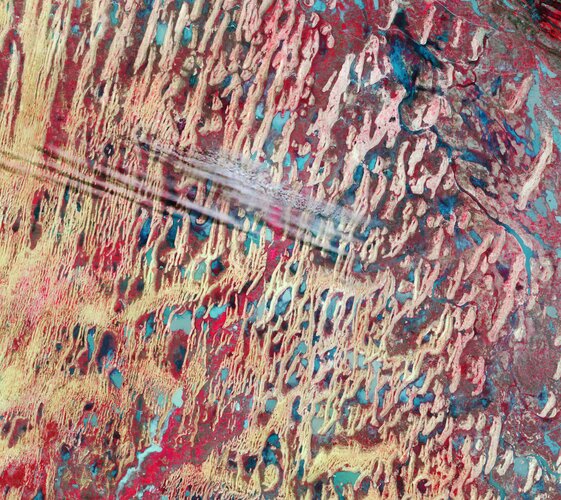
A part of the White Nile state in Sudan is featured in this false-colour image captured by the Copernicus Sentinel-2 mission.
Earth from Space: White Nile, Sudan
3.12.2021 10:00 ESA Observing the Earth
A part of the White Nile state in Sudan is featured in this false-colour image captured by the Copernicus Sentinel-2 mission.
Tech Leaders Partner with TomTom to Transform the Digital Cockpit Experience through TomTom IndiGO
3.12.2021 9:00 GISCafe.com Webcasts-Webinars AMSTERDAM, Nov. 30, 2021 (GLOBE NEWSWIRE) -- TomTom (TOM2), the geolocation technology specialist, today announced that industry leading companies …Successful Rocket Lab Launch Strengthens BlackSky Constellation by Two Satellites
3.12.2021 9:00 GISCafe.com Webcasts-Webinars Satellites enter revenue generation six days after launchHERNDON, Va. — (BUSINESS WIRE) — November 30, 2021 — “This was the …
Interview with Chris Mewse, Managing Director, Geoxphere
3.12.2021 9:00 GISCafe.com Webcasts-WebinarsLuxCarta Announces 3D Building & Tree Extraction for BrightEarth at IITSEC
3.12.2021 9:00 GISCafe.com Webcasts-Webinars Real-time Extraction from Sub-meter ImagerySophia Antipolis, France – November 29, 2021 – LuxCarta introduced its newest …
Planet To Present at the Morgan Stanley Space Summit on December 7, 2021
3.12.2021 9:00 GISCafe.com Webcasts-Webinars SAN FRANCISCO — (BUSINESS WIRE) — November 30, 2021 — Planet Labs Inc. (“Planet”), a leading provider of daily data and …Bluesky Aerial Photography used to Map Green Roofs
3.12.2021 9:00 GISCafe.com Webcasts-Webinars Leicestershire, UK, 02 December 2021 – Bluesky International Ltd, the aerial survey and mapping company, has supplied its high-resolution …Děkanské volno
3.12.2021 8:12 Katedra geoinformatiky UP OlomoucDěkan Přírodovědecké fakulty UP v Olomouci ruší výuku na Přf UP připadající na den 7. prosince 2021 počínaje 12:00, a to za účelem umožnění účasti studentů a vyučujících na shromáždění akademické obce konaném téhož dne. O akci se víc dočtete zde: https://www.prf.upol.cz/nc/zprava/clanek/kandidat-na-dekana-martin-kubala-predstavi-sve-priority-a-vize/
The post Děkanské volno appeared first on Katedra geoinformatiky.
Bentley Systems Announces Winners of the 2021 Going Digital Awards in Infrastructure
3.12.2021 1:49 GISCafe.com Webcasts-Webinars EXTON, Pa. — (BUSINESS WIRE) — December 2, 2021 —Bentley Systems, Incorporated (Nasdaq:BSY), the infrastructure engineering …
GeoComm Expands Team Dedicated to Enhancing Partner Program Experience
3.12.2021 1:49 GISCafe.com Webcasts-Webinars GeoComm continues to grow with the expansion of their partner program, adding Amanda Vanderwerf to coordinate partner program activities. Vanderwerf …Wiley Digital Archives - The Royal Geographical Society Collection [Knihovna geografie, byTopic]
3.12.2021 0:00 Katedra aplikované geoinformatiky a kartografie Přf UK Pro celou UK je nově dostupný zkušební přístup Wiley Digital Archives - The Royal Geographical Society Collection. Jedná se o databázi digitalizovaných objektů z oblasti geografie. Přistupovat ke zdroji můžete z Portálu elektronických zdrojů, kde je dostupný do 31. 12. 2021.3D Model of High-Altitude Cabbage Farm Quantifies Crop Yield to Stabilize Kimchi Prices
2.12.2021 23:08 Bentley SystemsPressCoverage
Low 2020 Cabbage Production in South Korea Inflates Value of Beloved Kimchi Vegetable
Read the articleZachry Group Awarded USD 10 Billion Contract
2.12.2021 18:25 Bentley SystemsPressCoverage
Going Digital with 4D Construction Modeling Transformed Project Workflows
Read the articleMoshe S Newhouse of Lakewood New Jersey based Moshe S Newhouse Real Estate, taps into DataMap Intelligence to Provide Organizations with Greater Insight When Searching For Real Estate Opportunities
2.12.2021 18:19 GISCafe.com Webcasts-Webinars LAKEWOOD, N.J., Dec. 1, 2021 — (PRNewswire) — Moshe S Newhouse of Lakewood New Jersey based Moshe S Newhouse Real Estate, licenses …Planet Expected to Close Business Combination with dMY Technology Group, Inc. IV with a Minimum of $589 Million in Gross Proceeds
2.12.2021 18:19 GISCafe.com Webcasts-Webinars - Strong investor support demonstrated with only approximately 2% of dMY Technology Group IV, Inc. (NYSE: DMYQ) public shares submitted for …Orbital Insight Integrates with Esri's ArcGIS Platform to Streamline Satellite and Sensor Imagery Analysis
2.12.2021 18:19 GISCafe.com Webcasts-Webinars Defense, Intelligence, and Commercial Organizations Can Now Seamlessly Access Basemaps and Visualize Data via Orbital Insight GOREDLANDS, Calif. …
Genesys International Transforms the Indian Mapping Landscape: To create a digital twin of urban India
2.12.2021 18:19 GISCafe.com Webcasts-Webinars NEW DELHI, Dec. 2, 2021 — (PRNewswire) — Genesys International, a pioneer in advanced mapping content and solutions, today launched its …120Water Adds Customer Engagement Features and Esri Connector to Help Water Utilities Meet Lead and Copper Rule Revisions
2.12.2021 18:19 GISCafe.com Webcasts-Webinars ZIONSVILLE, Ind., Dec. 02, 2021 (GLOBE NEWSWIRE) -- 120Water, the nation’s leading solutions provider for managing lead programs, has introduced …TECTERRA Inc. will host the NORTH51 Conference from May 4 to 6, 2022.
2.12.2021 18:19 GISCafe.com Webcasts-Webinars CALGARY, AB, Dec. 2, 2021 — (PRNewswire) —CALGARY, AB, Dec. 2, 2021 /CNW/ - More than 100 geospatial industry leaders, educators, and …
Huawei Asia Pacific Launches the Smart Campus Solution to Promote Development of the Smart Campus Industry
2.12.2021 18:19 GISCafe.com Webcasts-Webinars SINGAPORE, Dec. 2, 2021 — (PRNewswire) — At the Asia Pacific (APAC) Smart Campus Solution Launch 2021, Huawei released its Smart …Bentley Systems Announces Winners of the 2021 Going Digital Awards in Infrastructure
2.12.2021 17:02 Bentley SystemsPress Announcements
Bylo publikováno nové sestaven
2.12.2021 16:35 GEUSware Bylo publikováno nové sestavení GEUS 25.0.6.326. Sestavení mimo jiné obsahuje vylepšené funkce Statistik věcného břemene a trasy. Bohužel se zatím nepodařilo docílit zprovoznění funkcí souvisejících s aplikací "Nahlížení do KN".AFRY and Tyrens Introduces Bentley iTwin Technology to Design Swedens East Link Railway System
2.12.2021 15:34 Bentley SystemsPressCoverage
AFRY & Tyréns Introduces Bentley iTwin Technology to Design Sweden’s East Link Railway System
Read the articleInnovative Dam and Hydroelectric Project Wins Peoples Choice Award
2.12.2021 15:17 Bentley SystemsPressCoverage
Using PLAXIS for Geotechnical Design and Analysis Verifies Technical Feasibility and Scalability of the Sustainable Dam
Read the articleInnovative Dam and Hydroelectric Project Wins Peoples Choice Award
2.12.2021 15:17 Bentley SystemsPressCoverage
Using PLAXIS for Geotechnical Design and Analysis Verifies Technical Feasibility and Scalability of the Sustainable Dam
Read the articleHigh School Students Make Campus Sustainable with Digital Technology Learned from New BIM Workshop
2.12.2021 15:04 Bentley SystemsPressCoverage
Course Based on Bentley Systems Platform Boosts Engineering Skills of Technical Pupils in Mexico
Read the articleCivil Engineering Means Going Digital for Two Jacobs Engineers
2.12.2021 14:51 Bentley SystemsPressCoverage
Jacobs Engineers Steven Yule and Joao Barbeiro Innovatively Embrace Digital Technology on U.K. Rail Program
Read the articleCivil Engineering Means Going Digital for Two Jacobs Engineers
2.12.2021 14:51 Bentley SystemsPressCoverage
Jacobs Engineers Steven Yule and Joao Barbeiro Innovatively Embrace Digital Technology on U.K. Rail Program
Read the articleRada/odborný rada v právním oddělení na Katastrálním pracoviště Brno - venkov
2.12.2021 13:42 ČÚZK - volná místa Katastrální úřad pro Jihomoravský kraj Katastrální pracoviště Brno-venkov vypisuje výběrové řízení na místo Rada/odborný rada v právním oddělení na Katastrálním pracoviště Brno - venkovRada/odborný rada v právním oddělení na Katastrálním pracoviště Brno - venkov
2.12.2021 13:42 ČÚZK - předpisy a opatření Katastrální úřad pro Jihomoravský kraj Katastrální pracoviště Brno-venkovvypisuje výběrové řízení na místo
Rada/odborný rada v právním oddělení na Katastrálním pracoviště Brno - venkov
Rada/odborný rada v právním oddělení na Katastrálním pracoviště Brno - venkov
2.12.2021 13:42 ČÚZK /Urady/Katastralni-urady/Katastralni-urady/Katastralni-urad-pro-Jihomoravsky-kraj/Volna-mista/DMS/Rada-odborny-rada-v-pravnim-oddeleni-na-KatastralnOdborný referent v oddělení právních vztahů k nemovitostem na Katastrálním pracovišti Hustopeče
2.12.2021 13:39 ČÚZK - volná místa Katastrální úřad pro Jihomoravský kraj Katastrální pracoviště Hustopeče vypisuje výběrové řízení na místo Odborný referent v oddělení právních vztahů k nemovitostem na Katastrálním pracovišti HustopečeOdborný referent v oddělení právních vztahů k nemovitostem na Katastrálním pracovišti Hustopeče
2.12.2021 13:39 ČÚZK /Urady/Katastralni-urady/Katastralni-urady/Katastralni-urad-pro-Jihomoravsky-kraj/Uredni-deska/Oznameni-a-jina-uredni-sdeleni/Volna-mista/DMS/Odborny-referent-v-oddeleni-pravnich-vztahu-k-nemoOdborný referent v oddělení právních vztahů k nemovitostem na Katastrálním pracovišti Hustopeče
2.12.2021 13:39 ČÚZK - předpisy a opatření Katastrální úřad pro Jihomoravský kraj Katastrální pracoviště Hustopečevypisuje výběrové řízení na místo
Odborný referent v oddělení právních vztahů k nemovitostem na Katastrálním pracovišti Hustopeče
Jak rozšířit dosah vašeho GIS: Rady a osvědčené postupy pro ArcGIS Online
2.12.2021 11:18 ARCDATAE-knihu Jak rozšířit dosah vašeho GIS: Rady a osvědčené postupy pro ArcGIS Online vydala společnost Esri Press v roce 2021 jako průvodce pro správce organizace na ArcGIS Online. Shrnuje návody a postupy pro správu organizace, její nastavení a obsahuje také tipy, na co se zaměřit, aby byl váš portál oblíbenou stránkou nejen mezi vašimi kolegy, ale také mezi veřejností.
Knihu jsme lokalizovali do češtiny a vy si ji zde můžete stáhnout ve formátu PDF.
Watch Galileo launch on night of 3-4 December
2.12.2021 10:34 ESA Navigation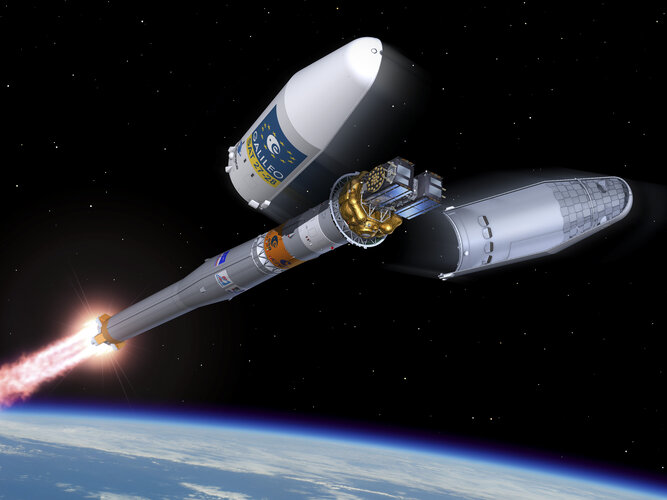
The earliest launch date for Europe’s latest Galileo satellites is now during the night of 3-4 December.
Galileo launch postponed
2.12.2021 10:34 ESA Navigation
Due to unavailability of a downrange tracking station, Arianespace has taken the decision to postpone the fueling of Galileo's three stage Soyuz launcher. The VS26 Soyuz launch vehicle and the satellites are in a stable and safe condition.
Watch Galileo launch on night of 2-3 December
2.12.2021 10:34 ESA Navigation
The launch of Europe’s latest Galileo satellites is now due to take place tonight, very early on Friday morning. The original launch date was postponed due to adverse weather conditions at the launch site.
Watch Galileo launch on night of 3-4 December
2.12.2021 10:34 ESA Navigation
Europe’s latest Galileo satellites will be launched on the night of 3-4 December. Arianespace has taken the decision to begin fuelling their three-stage Soyuz launcher.
12 things you never knew about Galileo satellites
2.12.2021 10:12 ESA Navigation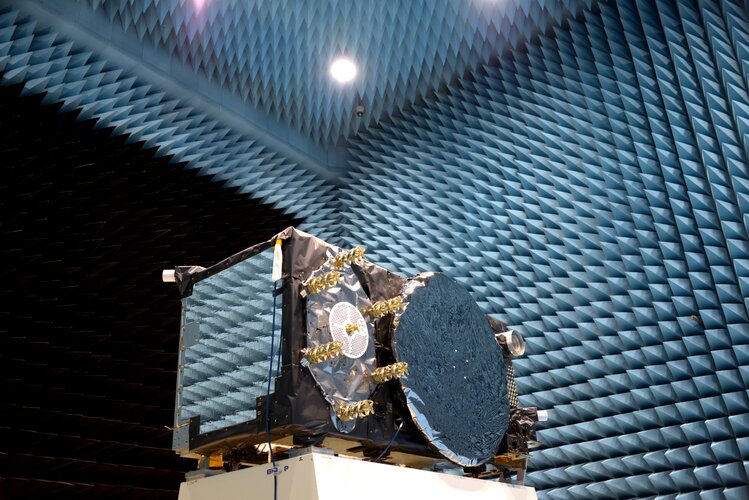
Europe’s Galileo satellite navigation system is providing the world’s most precise positioning services, but the satellites at its heart are surprisingly compact, and dependent on many different technologies to keep running. Here are 12 things you probably didn’t know about them:
USGIF Launches 2022 Scholarship Campaign
2.12.2021 1:12 GISCafe.com Webcasts-Webinars Foundation seeks donations toward collegiate geospatial intelligence educationHerndon, Virginia (December 1, 2021)—The United States …
NASA Expands its Commercial Data Acquisition Program with Airbus
2.12.2021 0:59 GISCafe.com Webcasts-Webinars @AirbusSpace @NASA #SatelliteImagery #Radar #SARHerndon, Virginia, USA. DD September 2021 - NASA has expanded the Commercial Smallsat Data …
Zemřel Miroslav Zikmund [Knihovna geografie, byTopic]
2.12.2021 0:00 Katedra aplikované geoinformatiky a kartografie Přf UK Ve středu 1.12.2021 se ve svých 102 letech vydal na svou poslední pouť známý cestovatel Ing. Miroslav Zikmund. Spolu s Jiřím Hanzelkou vytvořili legendární cestovatelskou dvojici, která navštívila přes 80 zemí světa a proslavila vozy Tatra a Československo. Čest jeho památce!Přednáška dr. Pöppla
2.12.2021 0:00 Geografický ústav MUV rámci programu INNOLEC zavítá na Geografický ústav dr. Ronald Pöppl z Vídeňské univerzity, který přednese přednášku na téma "Connectivity in geomorphology: Basic concepts and selected case studies". Přednáška se uskuteční v posluchárně Z3 ve čtvrtek 2. prosince v čase 10:30 až 12:00.
Dr. Pöppl se odborně věnuje problematice půdní eroze a konektivity transportu sedimentů v povodích.
Všichni zájemci jsou srdečně zváni.
Self sustainable Campus Project Wins Judges Choice Award
1.12.2021 20:41 Bentley SystemsPressCoverage
Using 3D Modeling and Digitalization to Design Mini-Modular Plant
Read the articleBentley Systems Announces the Year in Infrastructure 2021 Founders Honorees
1.12.2021 18:15 Bentley SystemsPress Announcements
Pleiades Neo Satellite Imagery is Now Available! Join the webinar
1.12.2021 18:12 GISCafe.com Webcasts-WebinarsRestoration Project to Preserve Strengthen Minneapolis Iconic Stone Arch Bridge
1.12.2021 18:02 Bentley SystemsPressCoverage
Collins Engineers Inc. Uses Innovative Reality Modeling Technology to Determine Necessary Repairs
Read the articleNGA Accelerator Seeks Third Cohort of Geospatial Technology Companies
1.12.2021 17:23 GISCafe.com Webcasts-Webinars NGA Accelerator will accept applications until Jan. 18 for its third cohort.ST. LOUIS, Mo., Dec. 1, 2021 — (PRNewswire) —
ST. LOUIS, …
DroneSense Assisted Emergency Teams at Surfside Building Collapse
1.12.2021 17:23 GISCafe.com Webcasts-Webinars AUSTIN, Texas, Dec. 01, 2021 (GLOBE NEWSWIRE) -- DroneSense responded to a Florida emergency service's need for assistance following the Surfside …ADLINK releases its first SMARC module based on Qualcomm QRB5165 enabling high performance robots and drones at low power
1.12.2021 17:23 GISCafe.com Webcasts-Webinars Integrated IoT technologies provide on-device AI capabilities at the edgeTAIPEI, Taiwan, Dec. 1, 2021 — (PRNewswire) —
TAIPEI, …
Airspace Link Partners with the City of Arlington, Texas, on Safer, Scalable Drone Solutions
1.12.2021 17:23 GISCafe.com Webcasts-Webinars ARLINGTON, Texas, Dec. 1, 2021 — (PRNewswire) — Airspace Link, Inc., a leading Detroit-based provider of drone mapping and …Sony Electronics' Airpeak S1 Professional Drone Now Available to Order
1.12.2021 17:23 GISCafe.com Webcasts-Webinars World's Smallest Alpha Mirrorless Camera-Ready Professional Drone Will Ship on December 24, 2021SAN DIEGO, Dec. 1, 2021 — (PRNewswire) — …
POWERCHINA Hubei Electric Engineering Develops One of a Kind Mountainous Solar Array
1.12.2021 17:11 Bentley SystemsPressCoverage
POWERCHINA Hubei Electric Engineering Develops One-of-a-Kind Mountainous Solar Array
Read the articlePOWERCHINA Hubei Electric Engineering Develops One of a Kind Mountainous Solar Array
1.12.2021 17:11 Bentley SystemsPressCoverage
POWERCHINA Hubei Electric Engineering
Read the articlePOWERCHINA Hubei Electric Engineering Develops One of a Kind Mountainous Solar Array
1.12.2021 17:11 Bentley SystemsPressCoverage
POWERCHINA Hubei Electric Engineering Develops One-of-a-Kind Mountainous Solar Array
Read the articleDen otevřených dveří
1.12.2021 16:13 Katedra geoinformatiky UP OlomoucDen otevřených dveří Univerzity Palackého se koná už tento pátek 3. 12. 2021 a opět online §Samozřejmě i Geoinformatika UPOL nemůže chybět Pro všechny zvědavé uchazeče budeme od 8 do 14:00 k dispozici na https://meet.vpsfree.cz/geoinformatika Takže neváhejte a připojte se
The post Den otevřených dveří appeared first on Katedra geoinformatiky.
Vrchní referent/rada v ekonomicko-správním oddělení v Kanceláři ředitele Katastrálního úřadu
1.12.2021 13:22 ČÚZK /Urady/Katastralni-urady/Katastralni-urady/Katastralni-urad-pro-Jihomoravsky-kraj/Volna-mista/DMS/Vrchni-referent-rada-v-ekonomicko-spravnim-oddelenVrchní referent/rada v ekonomicko-správním oddělení v Kanceláři ředitele Katastrálního úřadu
1.12.2021 13:22 ČÚZK - předpisy a opatření Katastrální úřad pro Jihomoravský kraj kancelář úřaduvypisuje výběrové řízení na místo
Vrchní referent/rada v ekonomicko-správním oddělení v Kanceláři ředitele Katastrálního úřadu
Vrchní referent/rada v ekonomicko-správním oddělení v Kanceláři ředitele Katastrálního úřadu
1.12.2021 13:22 ČÚZK - volná místa Katastrální úřad pro Jihomoravský kraj kancelář úřadu vypisuje výběrové řízení na místo Vrchní referent/rada v ekonomicko-správním oddělení v Kanceláři ředitele Katastrálního úřaduVychází nová verze nástroje ISKN Import
1.12.2021 10:19 ARCDATANástroj ISKN Import pro aplikaci ArcGIS Pro slouží ke zpracování dat výměnného formátu katastru (VFK) ČÚZK pro použití v geodatabázi Esri. Nová verze ISKN Import 2.8.3 přináší několik nových funkcí a opravy chyb.
Novinky:
- Při importu pomocí konzole je možné importovat všechny VFK soubory z adresáře.
- Výpis a uložení shrnutí při importu z konzole.
- Šablona verze VFK 5.6.
- Akce Before a After Import, které odstraňují (nebo vytvářejí) atributové indexy a relační třídy, což zrychluje import více souborů najednou.
- Automatické otevření Nahlížení do KN při označení definičního bodu nemovitosti v mapě, ke kterému lokálně chybí popisné informace (ISKN View).
- Úprava názvů domén a číselníků (přidán prefix ISKN_), názvy relačních tříd začínají na "R_".
- Vytváření datového modelu je značně zrychleno.
Opraveno:
- Načítání tabulek a tříd prvků ze šablony a konfigurace.
- Vazba na tabulku KRAJE je nyní na NKRAJE (ISKN View).
- Parsování datumů ze souborů při běhu na operačním systému, který není v češtině.
- Adresa prokliknutí do KN pro budovu (ISKN View).
Zdarma si můžete stáhnout verzi ISKN Import Free, která umožňuje základní operace s daty dostupnými v rámci souboru VFK.
Používáte-li ještě ISKN Studio pro ArcMap, můžete si také stáhnout novou šablonu VFK 5.6 pro ISKN Studio.
Více informací o celé sadě nástrojů ISKN Import i o verzi ISKN Free naleznete na samostatné stránce.
Astun Technology appoints new Head of Sales to achieve 35% growth by 2025
1.12.2021 9:00 GISCafe.com Webcasts-Webinars Epsom, UK, 2 December 2021, (www.astuntechnology.com)Market-leading open source geospatial solutions provider, Astun Technology, has appointed Mark …
Spire Global, Inc. Completes Acquisition of exactEarth Ltd.
1.12.2021 0:59 GISCafe.com Webcasts-Webinars Combined company is a global leader in the space-based maritime data and analytics IndustrySpire gains approximately $18m ARR, 150+ customers, vast …
Belize, Costa Rica, and the Dominican Republic Select terraPulse to Map Forest
30.11.2021 22:12 GISCafe.com Webcasts-Webinars Producing data of unprecedented granularity and accuracy, program will support countries' natural asset protection and participation in global carbon …VESA Publishes Thousands of High-Resolution Video and Image Files for Unrestricted Public Use Resulting from 3D Video Compression Research Study with York University
30.11.2021 22:12 GISCafe.com Webcasts-Webinars Multi-year research contract with York University established to validate and improve VESA compression codecs for augmented/virtual/extended reality …GeoInfoStrategie2020+
30.11.2021 20:45 Ministerstvo vnitra Strategie rozvoje infrastruktury pro prostorové informace v České republice po roce 2020Swift Navigation’s Precise Positioning Solution with STMicroelectronics Teseo V Delivers Centimeter-Level Accurate Location Precision
30.11.2021 20:21 GISCafe.com Webcasts-Webinars SAN FRANCISCO, Nov. 30, 2021 (GLOBE NEWSWIRE) -- Swift Navigation, a San Francisco-based tech firm redefining GNSS (Global Navigation Satellite …S&P CoreLogic Case-Shiller Index Reports 19.5% Annual Home Price Gain In September
30.11.2021 20:21 GISCafe.com Webcasts-Webinars NEW YORK, Nov. 30, 2021 — (PRNewswire) — S&P Dow Jones Indices (S&P DJI) today released the latest results for the S&P …BlackSky Continues Aggressive Business Expansion Adding Two Satellites with Upcoming SpaceX Launch
30.11.2021 17:45 GISCafe.com Webcasts-Webinars Company looks to double constellation capacity in 2021HERNDON, Va. — (BUSINESS WIRE) — November 30, 2021 —
BlackSky (NYSE: BKSY) …
Skytec Selects Esri Technology to Power New Precision Conservation Management Application
30.11.2021 17:45 GISCafe.com Webcasts-Webinars Startup's Ranger App Uses Cloud-Hosted Drone and Satellite Imagery to Monitor User LandREDLANDS, Calif. — (BUSINESS WIRE) — November 30, …
HSR.health Announces Issuance of U.S. Patent to Identify Population At-Risk of Opioid Addiction
30.11.2021 17:45 GISCafe.com Webcasts-Webinars The patent covers the use of HSR.health's novel geospatial and AI-based approach to help mitigate the growing opioid epidemic.ROCKVILLE, Md., Nov. …
Introducing TomTom IndiGO: The world’s first open digital cockpit software platform for carmakers
30.11.2021 17:45 GISCafe.com Webcasts-Webinars AMSTERDAM, Nov. 30, 2021 (GLOBE NEWSWIRE) -- TomTom (TOM2), the geolocation technology specialist, today unveiled TomTom IndiGO, the world’s …Kartograf/ka
30.11.2021 13:39 ČÚZK - předpisy a opatření Zeměměřický úřadvypisuje výběrové řízení na místo
Kartograf/ka
Kartograf/ka
30.11.2021 13:39 Zeměměřický úřad Zeměměřický úřadvypisuje výběrové řízení na místo
Kartograf/ka
Kartograf/ka
30.11.2021 13:39 ČÚZK - volná místa Zeměměřický úřad vypisuje výběrové řízení na místo Kartograf/kaGalileo satellites placed on Soyuz launcher
30.11.2021 13:28 ESA Navigation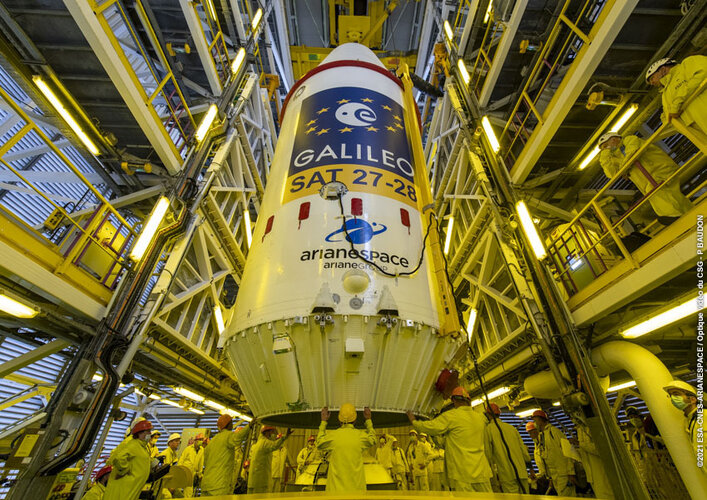 Image:
Galileo satellites placed on Soyuz launcher
Image:
Galileo satellites placed on Soyuz launcher
Schránka pro příjem podání
30.11.2021 12:20 ČÚZK - předpisy a opatření Katastrální úřad pro Královéhradecký kraj - Katastrální pracoviště Trutnov zveřejnil novou aktualitu: Vážení klienti,s účinností od 01. 12. 2021 je na Katastrálním pracovišti Trutnov instalována schránka pro příjem podání. Tato schránka je určena pro bezkontaktní podání návrhů na vklad a dalších písemností určených tomuto pracovišti. Schránka je pravidelně vybírána, okamžikem podání je okamžik výběru schránky. Příjem podání bude potvrzen spolu s případným podkladem pro platbu správního poplatku na Vámi sdělenou e-mailovou adresu.
Schránka pro příjem podání
30.11.2021 12:20 ČÚZK /Urady/Katastralni-urady/Katastralni-urady/Katastralni-urad-pro-Kralovehradecky-kraj/Katastralni-pracoviste/KP-Trutnov/O-uradu/Aktuality/Schranka-pro-prijem-podaniIt’s the final countdown for #myEUspace! Ready to submit?
30.11.2021 11:57 European GNSS Agency
We have many countdowns to look forward to this week, the first being the Galileo Launch 11 taking place 24 hours just before the #myEUSpace deadline! To help you put a final touch on your projects/ideas, here are the nuts and bolts of the "Space my Life" and "Dive in Quantum" challenges.
The "Space my life" challenge looks to create consumer solutions such as mobile applications and services using space data for health, gaming, sports, leisure, tourism, and everyday life purposes. The ideas should be leveraging innovative features of EGNSS and Copernicus in the mobile apps and smart wearables domain, fusing non-space technologies like IoT, big data, artificial intelligence, drones, 5G, augmented/mixed reality, etc.
For example, Galileo’s capability to deliver precise, robust positioning and timing information, combined with IoT, can enhance our lives through interconnected devices. Another example of innovative applications in this area is the exploitation of Galileo’s differentiators – like the High Accuracy Service and the authentication features – of which mobile applications can benefits thanks to the availability of GNSS raw measurements in smartphones.
Previous solutions targeting mass markets were #MyGalileoSolution competition overall winner "Vision Anchor" and #ΜyGalileoSolution finalist "Bit Pet".
Dive in Quantum, yes that’s a tough one!
Quantum technologies use the properties of quantum effects – the interactions of molecules, atoms, and even smaller particles, known as quantum objects – to create practical applications in many different fields, and space applications are one of them.
Participants are tasked with coupling Copernicus and Galileo with quantum technologies such as quantum computing, sensing, simulation, encryption to enhance space downstream applications.
With high-speed connectivity, protected communications, and high computing power becoming essential, quantum technologies can address or help mitigate some of the biggest challenges of today’s digital challenges.
Applications addressing the "Dive in Quantum" innovation area shall be submitted only in Track 1. In Track 1, applicants will have to turn their theoretical idea into a prototype of their product, articulating their value proposition and exploring Problem-Solution Fit based on a validation test in a relevant environment. Projects are expected to reach at least TRL 4.
In Track 2 teams are asked to bring their prototype/beta version to a Minimum Viable Product (MVP), reach a functional stage and commercialization readiness and develop a value proposition to meet Product-Market Fit. Projects expected to reach at least TRL 9.
Time is running out but before submitting, remember to read again the Terms of References here. Good luck!
Media note: This feature can be republished without charge provided the European Union Agency for the Space Programme (EUSPA) is acknowledged as the source at the top or the bottom of the story. You must request permission before you use any of the photographs on the site. If you republish, we would be grateful if you could link back to the EUSPA website (http://www.euspa.europa.eu).
Vrchní referent/rada v oddělení aktualizace KN na Katastrálním pracovišti Vyškov
30.11.2021 10:42 ČÚZK - volná místa Katastrální úřad pro Jihomoravský kraj Katastrální pracoviště Vyškov vypisuje výběrové řízení na místo Vrchní referent/rada v oddělení aktualizace KN na Katastrálním pracovišti VyškovVrchní referent/rada v oddělení aktualizace KN na Katastrálním pracovišti Vyškov
30.11.2021 10:42 ČÚZK - předpisy a opatření Katastrální úřad pro Jihomoravský kraj Katastrální pracoviště Vyškovvypisuje výběrové řízení na místo
Vrchní referent/rada v oddělení aktualizace KN na Katastrálním pracovišti Vyškov
Vrchní referent/rada v oddělení aktualizace KN na Katastrálním pracovišti Vyškov
30.11.2021 10:42 ČÚZK /Urady/Katastralni-urady/Katastralni-urady/Katastralni-urad-pro-Jihomoravsky-kraj/Uredni-deska/Oznameni-a-jina-uredni-sdeleni/Volna-mista/DMS/Vrchni-referent-rada-v-oddeleni-aktualizace-KN-naOdborný referent v oddělení dokumentace KN na Katastrálním pracovišti Břeclav
30.11.2021 10:40 ČÚZK - volná místa Katastrální úřad pro Jihomoravský kraj vypisuje výběrové řízení na místo Odborný referent v oddělení dokumentace KN na Katastrálním pracovišti BřeclavOdborný referent v oddělení dokumentace KN na Katastrálním pracovišti Břeclav
30.11.2021 10:40 ČÚZK - předpisy a opatření Katastrální úřad pro Jihomoravský krajvypisuje výběrové řízení na místo
Odborný referent v oddělení dokumentace KN na Katastrálním pracovišti Břeclav
Odborný referent v oddělení dokumentace KN na Katastrálním pracovišti Břeclav
30.11.2021 10:40 ČÚZK /Urady/Katastralni-urady/Katastralni-urady/Katastralni-urad-pro-Jihomoravsky-kraj/Uredni-deska/Oznameni-a-jina-uredni-sdeleni/Volna-mista/DMS/Odborny-referent-v-oddeleni-dokumentace-KN-na-KataOznámení o vyhlášení výběrového řízení na služební místo odborný/vrchní referent – OOKO
30.11.2021 9:25 ČÚZK - předpisy a opatření Katastrální úřad pro Plzeňský kraj - Katastrální pracoviště Plzeň-město zveřejnil novou aktualitu: Oznámení o vyhlášení výběrového řízení na služební místo odborný/vrchní referent – obnova katastrálního operátu OKO1003 , oddělení aktualizace KN, Katastrální úřad pro Plzeňský kraj, Katastrální pracoviště Plzeň - městoOznámení o vyhlášení výběrového řízení na služební místo odborný/vrchní referent – OOKO
30.11.2021 9:25 ČÚZK - předpisy a opatření Katastrální úřad pro Plzeňský kraj - Katastrální pracoviště Plzeň-město zveřejnil novou aktualitu: Oznámení o vyhlášení výběrového řízení na služební místo odborný/vrchní referent – obnova katastrálního operátu OKO1003 , oddělení aktualizace KN, Katastrální úřad pro Plzeňský kraj, Katastrální pracoviště Plzeň - městoOznámení o vyhlášení výběrového řízení na služební místo odborný/vrchní referent – OOKO
30.11.2021 9:25 ČÚZK /Urady/Katastralni-urady/Katastralni-urady/Katastralni-urad-pro-Plzensky-kraj/O-uradu/Aktuality/Oznameni-o-vyhlaseni-vyberoveho-rizeni-na-sluz-(2)Oznámení o vyhlášení výběrového řízení na služební místo odborný/vrchní referent – obnova katastráln
30.11.2021 9:18 ČÚZK - volná místa Katastrální úřad pro Plzeňský kraj odbor obnovy katastrálního operátu vypisuje výběrové řízení na místo Oznámení o vyhlášení výběrového řízení na služební místo odborný/vrchní referent – obnova katastrálnOznámení o vyhlášení výběrového řízení na služební místo odborný/vrchní referent – obnova katastráln
30.11.2021 9:18 ČÚZK /Urady/Katastralni-urady/Katastralni-urady/Katastralni-urad-pro-Plzensky-kraj/Uredni-deska/Oznameni-a-jina-uredni-sdeleni/Volna-mista/DMS/Oznameni-o-vyhlaseni-vyberoveho-rizeni-na-sluz-(2)Oznámení o vyhlášení výběrového řízení na služební místo odborný/vrchní referent – obnova katastráln
30.11.2021 9:18 ČÚZK - předpisy a opatření Katastrální úřad pro Plzeňský kraj odbor obnovy katastrálního operátuvypisuje výběrové řízení na místo
Oznámení o vyhlášení výběrového řízení na služební místo odborný/vrchní referent – obnova katastrálního operátu OKO1003
Unleash live Achieves AWS Energy Competency With Real Time Video Analytics for Wind, Solar and Power Line Automated Inspections
30.11.2021 2:28 GISCafe.com Webcasts-Webinars SYDNEY — (BUSINESS WIRE) — November 29, 2021 —Unleash live, one of the world’s leading A.I. video analytics platforms, …
Amsterdam Drone Week - Highlights ADW Hybrid 18-20 January 2022
30.11.2021 1:08 GISCafe.com Webcasts-Webinars Amsterdam, 29 November 2021Highlights ADW Hybrid 18-20 January 2022Center of the international drone community
In January RAI Amsterdam will once …
First responders gain valuable insights from Applanix technology for rescue and damage assessment
30.11.2021 1:06 GISCafe.com Webcasts-Webinars Georeferenced aerial images and mapping captured by NOAA with sixth-generation Digital Sensor SystemRICHMOND HILL, CANADA, Nov. 25, …
Hexagon announces partnership with Airbus for near real-time airborne bathymetric LiDAR surveillance system
30.11.2021 0:45 GISCafe.com Webcasts-Webinars (Jönköping, Sweden, 18 November 2021) Hexagon’s Geosystems division announced today a partnership with Airbus to …Insights From One of the Speakers on The Largest UK’s Geospatial Event – Geo Business 2021
29.11.2021 22:31 GISCafe.com Webcasts-Webinars NAPLES, Fla., Nov. 29, 2021 (GLOBE NEWSWIRE) -- GEO Business 2021, the UK’s largest geospatial event designed for everyone involved in the …DATAMARK Announces Partnership with Critical Response Group (CRG) to Provide Intelligent Indoor Mapping Solutions to the Public Safety Community
29.11.2021 22:31 GISCafe.com Webcasts-Webinars Partnership combines on-site data verification with the intelligence of DATAMARK's GIS portfolio of productsSANTA ANA, Calif., Nov. 29, 2021 …
Odborný seminář ČKS: Kartovýročí 2021
29.11.2021 20:58 Česká kartografická společnost Dne 11. listopadu 2021 se uskutečnilo v prostorách Pedagogické knihovny J.A. Komenského v Praze podzimní setkání kartografů u českých školních atlasů, a to v rámci již několikátého odborného semináře v rámci tzv. kartovýročí. Akce navázala na semináře realizované v minulých letech (již od roku 2016, kdy proběhl seminář a výstava k výročí 300 let od vydání Müllerovy mapy Moravy). Letošní setkání se vyznačovalo poněkud odlišnou […]Australia Must Embrace Digital Twins to Make Cities Smarter
29.11.2021 19:40 Bentley SystemsPressCoverage
Sourceable, Australia
Read the articleHuawei's Petal Maps 2.0 adds "Lane Guidance" and "Offline Map" features to help users save time and explore the world safely
29.11.2021 17:25 GISCafe.com Webcasts-Webinars SINGAPORE, Nov. 29, 2021 — (PRNewswire) — Huawei's Petal Maps app today announced the launch of its version 2.0 update, adding a …Kratos Receives $4.1 Million Unmanned Aerial Vehicle System Award from International Customer
29.11.2021 17:25 GISCafe.com Webcasts-Webinars SAN DIEGO, Nov. 29, 2021 (GLOBE NEWSWIRE) -- Kratos Defense & Security Solutions, Inc. (Nasdaq: KTOS), a leading National Security Solutions …Airobotics Drones Enters the Malaria Eradication Market
29.11.2021 17:25 GISCafe.com Webcasts-Webinars Airobotics has joined the fight against Malaria and entered a new market, signing an initial contract with Zzapp Malaria to supply aerial data and …Sentinel-6 returning most precise data ever on sea level
29.11.2021 14:35 ESA Observing the Earth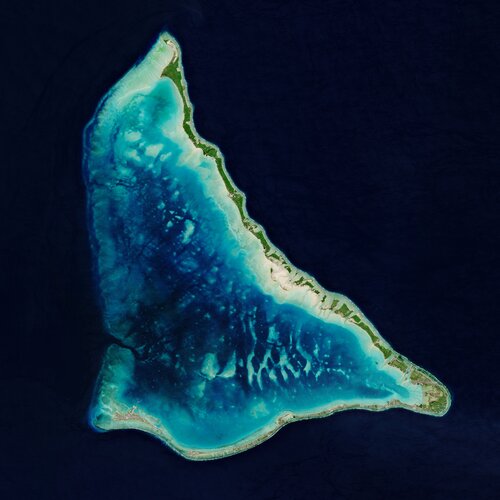
Sea-level rise is one of the most immediate consequences of climate change, as highlighted recently through urgent pleas from leaders of island nations at the COP26 summit. Global measures of sea-level rise are imperative to underpinning global policy and for strategies to protect coastlines and low-lying lands. Measuring tiny differences in the height of the sea surface from space is no easy task – but that’s exactly what the Copernicus Sentinel-6 Michael Freilich satellite is doing. And, after a year of exhaustive testing, this new mission is now delivering the world’s most accurate data on sea-level rise.
Oznámení o vyhlášení výběrového řízení na služební místo rada/odborný rada - vedoucí oddělení aktual
29.11.2021 13:09 ČÚZK /Urady/Katastralni-urady/Katastralni-urady/Katastralni-urad-pro-Plzensky-kraj/O-uradu/Aktuality/Oznameni-o-vyhlaseni-vyberoveho-rizeni-na-sluz-(1)Oznámení o vyhlášení výběrového řízení na služební místo rada/odborný rada - vedoucí oddělení aktual
29.11.2021 13:09 ČÚZK - předpisy a opatření Katastrální úřad pro Plzeňský kraj - Katastrální pracoviště Rokycany zveřejnil novou aktualitu: Oznámení o vyhlášení výběrového řízení na služební místo rada/odborný rada - vedoucí oddělení aktualizace a dokumentace KN-VOAD13,Katastrální úřad pro Plzeňský kraj, Katastrální pracoviště RokycanyOznámení o vyhlášení výběrového řízení na služební místo rada/odborný rada - vedoucí oddělení aktual
29.11.2021 13:03 ČÚZK /Urady/Katastralni-urady/Katastralni-urady/Katastralni-urad-pro-Plzensky-kraj/Uredni-deska/Oznameni-a-jina-uredni-sdeleni/Volna-mista/DMS/Oznameni-o-vyhlaseni-vyberoveho-rizeni-na-sluz-(1)Oznámení o vyhlášení výběrového řízení na služební místo rada/odborný rada - vedoucí oddělení aktual
29.11.2021 13:03 ČÚZK - předpisy a opatření Katastrální úřad pro Plzeňský kraj Katastrální pracoviště Rokycanyvypisuje výběrové řízení na místo
Oznámení o vyhlášení výběrového řízení na služební místo rada/odborný rada - vedoucí oddělení aktualizace a dokumentace KN-VOAD13 - Rokycany
Oznámení o vyhlášení výběrového řízení na služební místo rada/odborný rada - vedoucí oddělení aktual
29.11.2021 13:03 ČÚZK - volná místa Katastrální úřad pro Plzeňský kraj Katastrální pracoviště Rokycany vypisuje výběrové řízení na místo Oznámení o vyhlášení výběrového řízení na služební místo rada/odborný rada - vedoucí oddělení aktualJak pracovníci Pražské teplárenské provádějí kontroly šachet?
29.11.2021 12:45 Unicorn K tomu, aby mohla Pražská teplárenská dodávat teplo do pražských domácností, potřebuje mimo jiné i podzemní šachty. Ty je potřeba v pravidelných intervalech kontrolovat a revidovat. Významným pomocníkem je v tomto procesu mobilní GIS od Unicorn Systems.Jak pracovníci Pražské teplárenské provádějí kontroly šachet?
29.11.2021 12:45 Unicorn K tomu, aby mohla Pražská teplárenská dodávat teplo do pražských domácností, potřebuje mimo jiné i podzemní šachty. Ty je potřeba v pravidelných intervalech kontrolovat a revidovat. Významným pomocníkem je v tomto procesu mobilní GIS od Unicorn Systems.odborný/vrchní referent - personalista/ka v kanceláři ředitele Katastrálního úřadu pro Jihočeský kra
29.11.2021 11:43 ČÚZK /Urady/Katastralni-urady/Katastralni-urady/Katastralni-urad-pro-Jihocesky-kraj/Uredni-deska/Oznameni-a-jina-uredni-sdeleni/Volna-mista/DMS/odborny-vrchni-referent-personalista-ka-v-kancelodborný/vrchní referent - personalista/ka v kanceláři ředitele Katastrálního úřadu pro Jihočeský kra
29.11.2021 11:43 ČÚZK - předpisy a opatření Katastrální úřad pro Jihočeský kraj kancelář ředitelevypisuje výběrové řízení na místo
odborný/vrchní referent - personalista/ka v kanceláři ředitele Katastrálního úřadu pro Jihočeský kraj (ID SM 30000370/30094306)
odborný/vrchní referent - personalista/ka v kanceláři ředitele Katastrálního úřadu pro Jihočeský kra
29.11.2021 11:43 ČÚZK - volná místa Katastrální úřad pro Jihočeský kraj kancelář ředitele vypisuje výběrové řízení na místo odborný/vrchní referent - personalista/ka v kanceláři ředitele Katastrálního úřadu pro Jihočeský kraEUSPA makes first appearance at General Assembly of the Copernicus networks
29.11.2021 11:37 European GNSS Agency
The 5th General Assembly of the Copernicus Academy and Relays Networks, organized by the European Commission, was the opportunity to reflect on the 2021 Earth Observation milestones and build the future of the Copernicus networks together. The EU Agency for the Space Programme was present for the first time to present its new mission and highlight Copernicus flavored funding opportunities.
The two-day event, which took place on 23-24 November, gathered interesting European Commission policy experts, industry stakeholders, and Earth Observation enthusiasts. Distinguished panelists highlighted the importance of the new EU Space Programme policy framework and the potential synergies between the components can offer. Particular emphasis was placed on how Copernicus, in conjunction with Galileo and EGNOS, can contribute to current pressing challenges such as environmental compliance or ice retreat in polar regions.
For the first time after its extended mandate to support the promotion and commercialisation of the downstream Copernicus services, EUSPA participated in the General Assembly. Justyna Redelkiewicz, head of LBS at EUSPA Market Development, participated in the Session ‘’CASSINI: Moving forward with a more competitive EU Space Industry’’ where she presented the revisited mission of the agency as well new funding opportunities that now also include Copernicus. Redelkiewicz highlighted that the Horizon Europe calls are designed to boost synergies between the EU Space Programme components and blend well with the EU Green Deal. She also sent a reminder to #myEUspace applicants about the December 2nd submission deadline before giving a hint about the upcoming EUSPA Market Report, as it will include Copernicus insights.
New Space and Copernicus is the real deal!
Interest was sparked during the ''New Space & Copernicus: How can they best cooperate?'' session. European Commission experts pointed out, that relationship between the EU Earth Observation Programme and New Space companies is mutually beneficial. Copernicus offers a vast amount of geospatial data that help them step up their business operations. At the same time, Copernicus can benefit from quality input such as very high-resolution imagery from new space companies in Europe.
Guest speakers during this session included ICEYE, a Finnish global leader in small satellite synthetic-aperture radar (SAR) technology. The company recently became the first European New Space company to provide data to the Copernicus Contributing Missions. Copernicus services will now receive access to ICEYE’s SAR imagery and use it to enhance public safety, border control, security, and maritime domain awareness. Other New space companies included ScanWorld and Auroratech, both of which rely on Sentinel data for vegetation analysis and wildfire detection, respectively.
Read this: Unlocking Africa’s full EO potential with EU Space synergies
#EUSpace is truly global
The EU space economy is the second-largest - in the world- supported by flagship space assets Galileo, EGNOS, and Copernicus. It is estimated to have generated over 250,000 jobs, with over 50,000 in the downstream sector. The edition of the 2021 General Assemblies was the opportunity to tap on this and present the newly established initiative of DG DEFIS called ‘’EU GLOBAL ACTION on Space’’ aimed at deepening existing and forging new business opportunities with targeted third countries across the globe. Copernicus network members can patriciate in or benefit from webinars and events organized by Global action.
‘’Propagating information about Copernicus's potential and preparing new generations of professionals to use space applications is fundamental for a successful European Space policy. In this respect, the Assembly of Copernicus Academy and Relays Networks has an important role and will also benefit from the extended mandate that EUSPA has gained in the New Space Programme” The Generally Assembly meeting is now renewed for 2022 and EUSPA looks forward to it,’’ says Mauro Facchini, Head of the Copernicus Unit at DG DEFIS.
Media note: This feature can be republished without charge provided the European Union Agency for the Space Programme (EUSPA) is acknowledged as the source at the top or the bottom of the story. You must request permission before you use any of the photographs on the site. If you republish, we would be grateful if you could link back to the EUSPA website (http://www.euspa.europa.eu).
EUSPA makes first appearance at General Assembly of the Copernicus networks
29.11.2021 11:37 European GNSS Agency
The 5th General Assembly of the Copernicus Academy and Relays Networks, organized by the European Commission, was the opportunity to reflect on the 2021 Earth Observation milestones and build the future of the Copernicus networks together. The EU Agency for the Space Programme was present for the first time to present its new mission and highlight Copernicus flavored funding opportunities.
The two-day event, which took place on 23-24 November, gathered interesting European Commission policy experts, industry stakeholders, and Earth Observation enthusiasts. Distinguished panelists highlighted the importance of the new EU Space Programme policy framework and the potential synergies between the components can offer. Particular emphasis was placed on how Copernicus, in conjunction with Galileo and EGNOS, can contribute to current pressing challenges such as environmental compliance or ice retreat in polar regions.
For the first time after its extended mandate to support the promotion and commercialisation of the downstream Copernicus services, EUSPA participated in the General Assembly. Justyna Redelkiewicz, head of LBS at EUSPA Market Development, participated in the Session ‘’CASSINI: Moving forward with a more competitive EU Space Industry’’ where she presented the revisited mission of the agency as well new funding opportunities that now also include Copernicus. Redelkiewicz highlighted that the Horizon Europe calls are designed to boost synergies between the EU Space Programme components and blend well with the EU Green Deal. She also sent a reminder to #myEUspace applicants about the December 3rd submission deadline before giving a hint about the upcoming EUSPA Market Report, as it will include Copernicus insights.
New Space and Copernicus is the real deal!
Interest was sparked during the ''New Space & Copernicus: How can they best cooperate?'' session. European Commission experts pointed out, that relationship between the EU Earth Observation Programme and New Space companies is mutually beneficial. Copernicus offers a vast amount of geospatial data that help them step up their business operations. At the same time, Copernicus can benefit from quality input such as very high-resolution imagery from new space companies in Europe.
Guest speakers during this session included ICEYE, a Finnish global leader in small satellite synthetic-aperture radar (SAR) technology. The company recently became the first European New Space company to provide data to the Copernicus Contributing Missions. Copernicus services will now receive access to ICEYE’s SAR imagery and use it to enhance public safety, border control, security, and maritime domain awareness. Other New space companies included ScanWorld and Auroratech, both of which rely on Sentinel data for vegetation analysis and wildfire detection, respectively.
Read this: Unlocking Africa’s full EO potential with EU Space synergies
#EUSpace is truly global
The EU space economy is the second-largest - in the world- supported by flagship space assets Galileo, EGNOS, and Copernicus. It is estimated to have generated over 250,000 jobs, with over 50,000 in the downstream sector. The edition of the 2021 General Assemblies was the opportunity to tap on this and present the newly established initiative of DG DEFIS called ‘’EU GLOBAL ACTION on Space’’ aimed at deepening existing and forging new business opportunities with targeted third countries across the globe. Copernicus network members can patriciate in or benefit from webinars and events organized by Global action.
‘’Propagating information about Copernicus's potential and preparing new generations of professionals to use space applications is fundamental for a successful European Space policy. In this respect, the Assembly of Copernicus Academy and Relays Networks has an important role and will also benefit from the extended mandate that EUSPA has gained in the New Space Programme,” says Mauro Facchini, Head of the Copernicus Unit at DG DEFIS.
The Generally Assembly meeting is now renewed for 2022 and EUSPA looks forward to it!
Media note: This feature can be republished without charge provided the European Union Agency for the Space Programme (EUSPA) is acknowledged as the source at the top or the bottom of the story. You must request permission before you use any of the photographs on the site. If you republish, we would be grateful if you could link back to the EUSPA website (http://www.euspa.europa.eu).
EUSPA makes first appearance at General Assembly of the Copernicus networks
29.11.2021 11:37 European GNSS Agency
The 5th General Assembly of the Copernicus Academy and Relays Networks, organized by the European Commission, was the opportunity to reflect on the 2021 Earth Observation milestones and build the future of the Copernicus networks together. The EU Agency for the Space Programme was present for the first time to present its new mission and highlight Copernicus flavored funding opportunities.
The two-day event, which took place on 23-24 November, gathered interesting European Commission policy experts, industry stakeholders, and Earth Observation enthusiasts. Distinguished panelists highlighted the importance of the new EU Space Programme policy framework and the potential synergies between the components can offer. Particular emphasis was placed on how Copernicus, in conjunction with Galileo and EGNOS, can contribute to current pressing challenges such as environmental compliance or ice retreat in polar regions.
For the first time after its extended mandate to support the promotion and commercialisation of the downstream Copernicus services, EUSPA participated in the General Assembly. Justyna Redelkiewicz, head of LBS at EUSPA Market Development, participated in the Session ‘’CASSINI: Moving forward with a more competitive EU Space Industry’’ where she presented the revisited mission of the agency as well new funding opportunities that now also include Copernicus. Redelkiewicz highlighted that the Horizon Europe calls are designed to boost synergies between the EU Space Programme components and blend well with the EU Green Deal. She also sent a reminder to #myEUspace applicants about the December 3rd submission deadline before giving a hint about the upcoming EUSPA Market Report, as it will include Copernicus insights.
New Space and Copernicus is the real deal!
Interest was sparked during the ''New Space & Copernicus: How can they best cooperate?'' session. European Commission experts pointed out, that relationship between the EU Earth Observation Programme and New Space companies is mutually beneficial. Copernicus offers a vast amount of geospatial data that help them step up their business operations. At the same time, Copernicus can benefit from quality input such as very high-resolution imagery from new space companies in Europe.
Guest speakers during this session included ICEYE, a Finnish global leader in small satellite synthetic-aperture radar (SAR) technology. The company recently became the first European New Space company to provide data to the Copernicus Contributing Missions. Copernicus services will now receive access to ICEYE’s SAR imagery and use it to enhance public safety, border control, security, and maritime domain awareness. Other New space companies included ScanWorld and Auroratech, both of which rely on Sentinel data for vegetation analysis and wildfire detection, respectively.
Read this: Unlocking Africa’s full EO potential with EU Space synergies
#EUSpace is truly global
The EU space economy is the second-largest - in the world- supported by flagship space assets Galileo, EGNOS, and Copernicus. It is estimated to have generated over 250,000 jobs, with over 50,000 in the downstream sector. The edition of the 2021 General Assemblies was the opportunity to tap on this and present the newly established initiative of DG DEFIS called ‘’EU GLOBAL ACTION on Space’’ aimed at deepening existing and forging new business opportunities with targeted third countries across the globe. Copernicus network members can patriciate in or benefit from webinars and events organized by Global action.
‘’Propagating information about Copernicus's potential and preparing new generations of professionals to use space applications is fundamental for a successful European Space policy. In this respect, the Assembly of Copernicus Academy and Relays Networks has an important role and will also benefit from the extended mandate that EUSPA has gained in the New Space Programme” The Generally Assembly meeting is now renewed for 2022 and EUSPA looks forward to it,’’ says Mauro Facchini, Head of the Copernicus Unit at DG DEFIS.
Media note: This feature can be republished without charge provided the European Union Agency for the Space Programme (EUSPA) is acknowledged as the source at the top or the bottom of the story. You must request permission before you use any of the photographs on the site. If you republish, we would be grateful if you could link back to the EUSPA website (http://www.euspa.europa.eu).
















